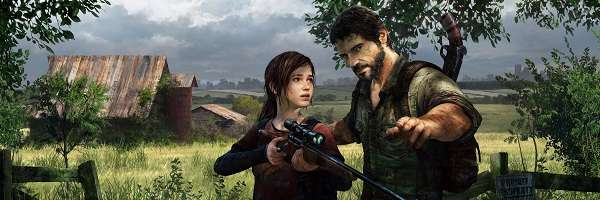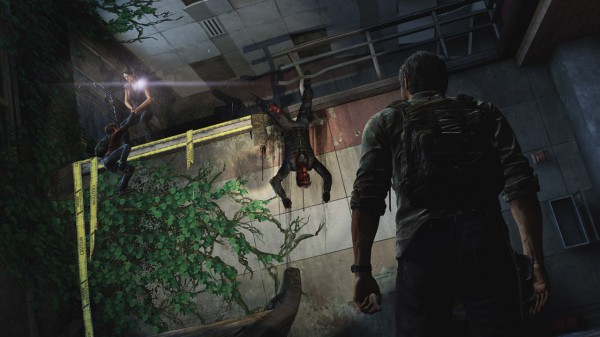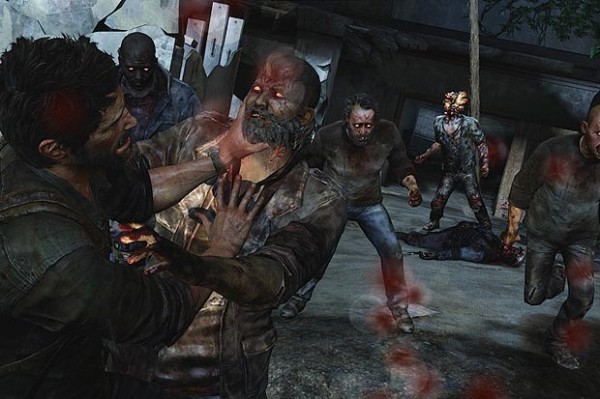
The Last of Us PS3 Review
After the reveal of The Last of Us and hearing that the extremely talented people at Naughty Dog were behind this new IP, I was never going to be concerned if this was going to be a decent game. Just look at the studio’s history and you can see that quality is something they have refined, from Crash Bandicoot, Jak and Daxter to their latest Indiana Jones-esque trilogy of the Uncharted franchise. All are great in their own way. My concern was if Naughty Dog could pull off a serious, down-to-earth, post-apocalyptic setting. The studio hasn’t done anything like this before, so I was expecting it to feel similar to Uncharted. But oh boy, from gameplay to the story, how completely wrong I was to worry.
The Last of Us is a completely different beast, with a serious tone that is similar to The Walking Dead game that most of us all seemed to have enjoyed last year. The astonishing start of the game builds up the setting and attitude for what to expect from the rest of The Last of Us’ 14-hour adventure, and this dark and gritty world never gives up showing the punishment and pain the survivors of the fungal infection have to deal with over the game’s year-long story arc. I don’t want to speak much about the plot, because this is a game that tackles a dark theme with unexpected twists, and displays a worthy effort to get the player to question people’s humanity in such dire situations. Much of the context might not be fresh, but it’s rare to find them stitched together so well. It should be known that this is a tale that brings every emotion – you’ll care, you’ll laugh, you’ll hate, and of course, you’ll be sad.

Unquestionably, one of the main reasons why I cared so much for the game’s two main survivalists is the fantastic characters and their development throughout the game. Joel is the adult – the old experienced man – who has toughed out 20 years of this disastrous infection to still be living to talk about it. He knows how to survive and will do what must be done to make sure he and the people close to him will stay alive. Even though the player hasn’t experienced such situations as Joel finds himself in, he’s a character that players can connect to rather easily. His true feelings are always showing, and it’s easy to understand his actions.
We must not forget about Ellie, though, who is just as important and is arguably better-developed than Joel (she deserves to be on the cover!). Ellie is a 14-year-old girl who has grown up and adapted to this rough world. She has no concept of what the world was like before the infection, but that doesn’t mean she isn’t detached from a young teenage personality. She’s spunky, cheeky, straightforward, and wants to know more about the world prior to its current state. This supplies lighthearted and comical moments that crop up when the game is kind enough to shed some sunlight into the grim storytelling. Both Joel and Ellie grow together into a father-daughter-like relationship and the chemistry between the two is exceptional. The fine work from Troy Baker and Ashley Johnson must be mentioned, as this makes everything that happens in the game all the more convincing.

When I sit down and think about the gameplay of The Last of Us, it amazes me that Naughty Dog has managed to blend concepts popular in survivor horror so well with this action-adventure title. For instance, ammo is scarce, so mechanically, players cannot act as if The Last of Us was a pure shooter, because you will soon find yourself out of bullets. Enemies don’t often drop much when taken down, and if they do, it’s a measly bullet or two. The game secretly is telling you to approach situations in a different manner – and the tools are there to do such a thing. Joel can crouch and hide behind cover to stay out of sight of both human survivors and the nasty infected. Multiple sections of the game allow for scenarios where you can get by a section without even attacking anyone. For areas where you can’t, Joel still has the skills to sneak behind someone to choke them out, or if you have the shiv in your arsenal, you can kill them for a faster animation.
Scavenging the surrounding environments for items, such as alcohol, blades and sugar, is a must to keep Joel equipped with gear, though there aren’t many items to pick up. Each one fits into one of six types, but from these items you can craft health packs, bombs, and even attach tools to melee weapons for an instant kill hit. Crafting and scavenging is a very simple mechanic, but it keeps with the game’s theme of survival. Another part of scavenging is looking for pills and cogs, which act as the title’s point system to increase Joel’s stats and the weapons he carries. These points can be spent in gaining more health, faster recovery and better hearing (more on that later). Cogs do the same, but for weapons, meaning you can increase the ammo capacity for the shotgun or increase the reload speed of a rifle. Increasing Joel’s own stats can be done on the fly, but weapons have to be done at a workbench, similar to the combination mechanic in the Dead Rising series.

Prior to the game’s release, I noticed there was some worry about the hearing ability of Joel. If you haven’t seen it, what this ability does is enable an X-ray-like view to let Joel see silhouettes of enemies through walls. After playing the game, it makes sense and isn’t nearly as overpowering as one might think. It has a limited scale on its distance, so in fact you’re only ever able to notice people in close proximity. The idea is to act as hearing, and if thinking about that for a second, in real life you’d be able to get an idea of a where someone was located by hearing their sound. In a video game, this is hard to do since sound comes out of the speakers, often in front of the player. So this limited X-ray allows the concept of locating by sound and it helps to pinpoint where someone is when all you can hear is the grunt of an infected stumbling around. If you hate the idea of it so much, then never press the R2 button.
Combat is more diverse than, say, something like Uncharted. You can use your various shotguns, pistols and rifles to shoot people from behind cover; set down traps using your gear; sneak up on them; or you can run at them and use one of the melee weapons found in the environment, like the metal pipes, which can be used to aggressively take down hostile opponents. Yes, it’s violent, but it never feels out-of-context for the game, nor does it display the violence as a “trophy” to say “Look, we’re one gory-ass game!” It’s a brutal world where people do the most awful things to keep breathing that bit more, so when you’re using the context-sensitive surroundings during melee combat and you see Joel take a guy’s head and ram it into the wall, it doesn’t feel far-fetched from the reality and mind-set of the characters placed in such dreadful circumstances.

One thing I liked about participating in the gun fights is that none of the humans felt like bullet sponges, and what is even more surprising is that Joel himself isn’t one either. Both enemies and Joel have stun animations when getting hit by a bullet. Get shot by a shotgun up-close? You get pushed down to the ground. Get popped by a pistol? You’ll crumble to your knee. This stops the player from being able to spam bullets when getting hit and puts more emphasis on staying out of sight and being careful about how you approach combat scenarios. The Last of Us is a linear game, but the game’s environment feels more open than the arrangement of Uncharted, and this helps in such fire-fights, as you can use this openness to plan attacking the most efficient way.
There is a nice balance between fighting against the humans and surviving against the infected. The Last of Us, while not necessarily scary, creates astonishing levels of tense atmosphere with its encounters. You could be walking through a darkened, collapsed building, using your torch to light the way, but then you hear the distinguished sound of a Clicker as it uses its bat-like sonar to detect movement (I should note that these Clickers also kill in one hit). You crawl, turn off your light (since other infected can see it) and creep slowly towards the dangerous section. Surveying is very important, as infected can be often “hidden” in dark areas. Just experiencing this is nerve-wracking, because Joel is your average guy. For example, if he gets swamped with infected, he is pushed to cower and protect himself from the beating, and the only way to push them off is to press the sprint button to try and leap away. The experience – the “story” that you’ll speak to your friends about – with The Last of Us is less about the setpieces created by cinematic-style gameplay and more about the minute-to-minute advancements you make through the game’s level design and its hazardous occupants.

Due to the narrative, you’re transported to a variety of curious locales that keep the game feeling fresh. After the prologue, you find yourself in the quarantine zone, and then move onto the outskirts, eventually to other cities and suburbs that all look believable if such outbreak would occur in America. Trees protrude out of buildings and the cemented ground, and places look ravaged, as if looters had stolen everything during the disastrous event. The designers have done an exceptional job at recreating a broken-down America and its loss of a society. Even though the player never finds out the reasoning behind the outbreak, the little letters, notes and voice recordings left behind build a picture up that can be interpreted. All this adds to the immersion, getting the player to slot into the world and adapt to it. The Last of Us does that exceptionally, but there is one problem, which really is my only gripe with this otherwise amazing game: the AI.
In general, the AI is good. Ellie and other partners you meet never get stuck or do game-breaking things, but what I did find is that they can break the engagement of the atmosphere between the player and the infected. This really is about one type of infected: the Clickers. They see by sound, and so when Ellie decides to come out of cover, get up and start sprinting towards another piece of cover – which involves running directly past a Clicker and said Clicker completely ignores her actions – it can be a real deal-breaker on the atmosphere. It’s not a rare thing, either, as this must have happened at least a dozen times. This matter is the only negative I have for the whole game. Some people will be fine with it; for me, I felt it threw me out of “the zone” – the experience and setting I was getting so wrapped up in was slightly shattered in front of me.

Naughty Dog excels at making games with high-quality presentation and remarkable graphics. The Last of Us is no change in that design. This game is pushing the PS3 to its limits to bring one of the console’s best looking titles. The world is splashed with detail and great texture work. Performance capture is once again able to reflect the characters’ emotions and attitude across to the player through stellar animation. When Joel is angry at someone, you see it in his face; if Ellie is annoyed at something, she’s going to give you the eye, or sulk. It makes the journey across America with these two characters one memorable trip, and having it look as good as it does is magnificent. The game’s soundtrack also beautifully captures what is happening on-screen through its musical score.
The brilliance of The Last of Us’ campaign makes it easy to forget that this game does include a multiplayer mode called Factions. It’s actually pretty good, as it manages to throw in a metagame on top. The setting for the multiplayer is that after 20 years since the outbreak began, the factions have been fighting over territory and supplies, and live to grow their influence over such land. On first boot-up of the multiplayer, the player is given the choice to join Hunters or Fireflies and become a leader of a pack of survivors. The choice is locked until the faction dies or survives long enough to win. Gameplay-wise, it’s similar to the slower pacing of the main campaign, and everyone can die quite easily, but it has a spin on the norm – you need to pick up salvaged equipment from dead bodies or from search points around the multiplayer map to be able to upgrade gear and keep your faction alive. Each match you participate in counts as a day, and if successfully kept alive, you will eventually work your way through twelve weeks of in-game time.

Relating to the metagame, if you keep winning matches, finding items and beating the challenges the game throws at you, then you can increase the size of your faction. This requires more resources to keep them alive. If you fail at this, then your faction will decrease in size. There are leaderboards for the faction size (as well as for other stuff), and you can gain one-use boosters to help in a battle, but you can completely not care about it if all you want is to shoot people. A funny thing is that you can add your Facebook account for the multiplayer and it will take your friends from there and add them as people who join your clan. You get news posts saying things like “Leanne has put up a perimeter,” and of course they can die if you fail to supply the rations. It’s an insignificant piece of fun, not as ground-breaking as it first seemed to be from the hints coming out at Naughty Dog.
At the end of the day, one detail is all that matters about the The Last of Us: its single-player campaign. Naughty Dog has taken what it’s learnt from crafting the Uncharted franchise and spun that experience into a more down-to-earth, realistic adventure that shines with storytelling excellence, great combat, tense atmosphere and the highest quality in presentation, making The Last of Us one of Sony’s best exclusives for the PS3’s ever-growing library of great games.
